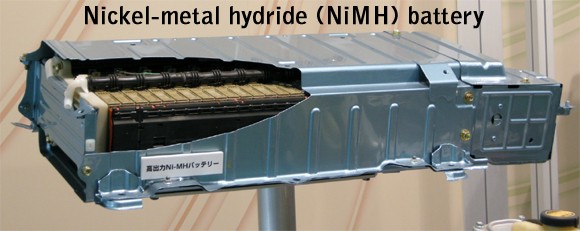
Much like the one put together by in 1859 by its inventor, Gaston Planté, these batteries consist of lead plates sitting in an electrolyte (usually a mixture of sulfuric acid and water) solution. The lead acid battery has been improved by the addition of absorbed glass mat (AGM) between the lead plates. This material absorbs the electrolyte so if the battery were to break open nothing would spill out. Also, the "wet cell" lead acid battery produces hydrogen and oxygen that must be vented while the AGM version can recombine the gases. Some electric cars, like the Reva-G Wiz, still use these "wet cell" lead acid batteries because of their lower cost though they have the disadvantage of requiring water to be added to them occasionally.
As well as the lead acid battery has served us over the decades, it also has its drawbacks. These disadvantages have really kept electric vehicles from being a mainstream practical reality. Not only are they heavy and unable to hold a lot of energy, but the number of times they can be charged and discharged (cycled) is rather low. Luckily for us, the past 20 years have seen new battery technologies developed and commercialized. Hit the jump for more battery basics.
For automotive applications the battery that has really taken off in recent years is the nickel-metal hydride (NiMH) battery. This type is widely used in hybrids, such as the Toyota Prius, and some all-electric cars and scooters. The 2nd generation of GM's EV1 employed NiMH in 1999 as does the Vectrix VX-1 scooter today.

Of course, no discussion about the use of NiMH batteries in all-electric cars is complete without mention of the controversy (some would say conspiracy) surrounding their allowed usage. Cobasys, which is a 50/50 joint venture between subsidiaries of Chevron and ECD Ovionics (Chevron also owns 19.99 per cent of ECD Ovionics and effectively controls who is licensed to use the tech) prevented Toyota from continuing to use the cross-licensed and improved Panasonic NiMH battery in their RAV4EV and production of that vehicle ceased. Owners of RAV4 EVs today can not buy new NiMH batteries, although they can have theirs refurbished.
Though NiMH batteries may enjoy popularity today, it appears they are being replaced by lithium ion (Li-ion) batteries. These batteries have a few advantages over NiMH. Besides not having patent licensing issues preventing their use in all-electric cars, they are lighter and contain more energy. We will discuss li-ion in more detail in a future Greenlings post.





Sign in to post
Please sign in to leave a comment.
Continue